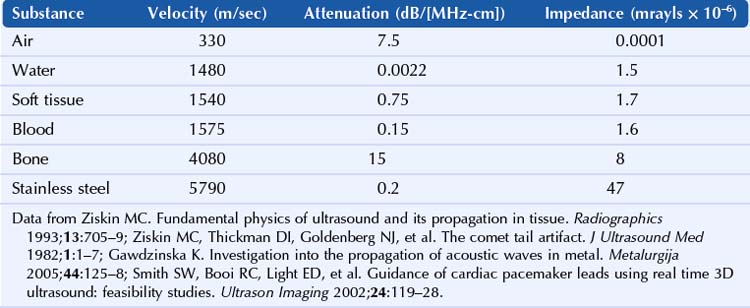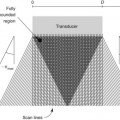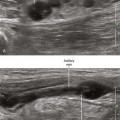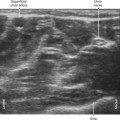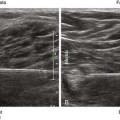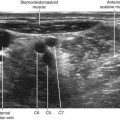4 Reflection
Ultrasonography measures the amplitude of the return echo as a function of time.1 Sound waves are reflected at the interface of tissues with different acoustic impedances. The acoustic impedance (kg/[m2-sec]) is the product of the density (kg/m3) and velocity (m/sec). The extent of reflection is governed by the reflection coefficient: R = (Z1 − Z2)/(Z1 + Z2). If Z1 = Z2, there is no reflected wave.2 Ultrasound characteristics of biologic tissue and interventional materials are summarized in Table 4-1.
Reflections off a smooth surface are called specular. If two specular reflectors are close to each other, reverberation within the sound field can result, displayed as parallel, equally spaced lines deep to the reflectors. Comet-tail artifact, which is a form of reverberation artifact, is caused by multiple internal reflections from a small, highly reflective interface.3,4
